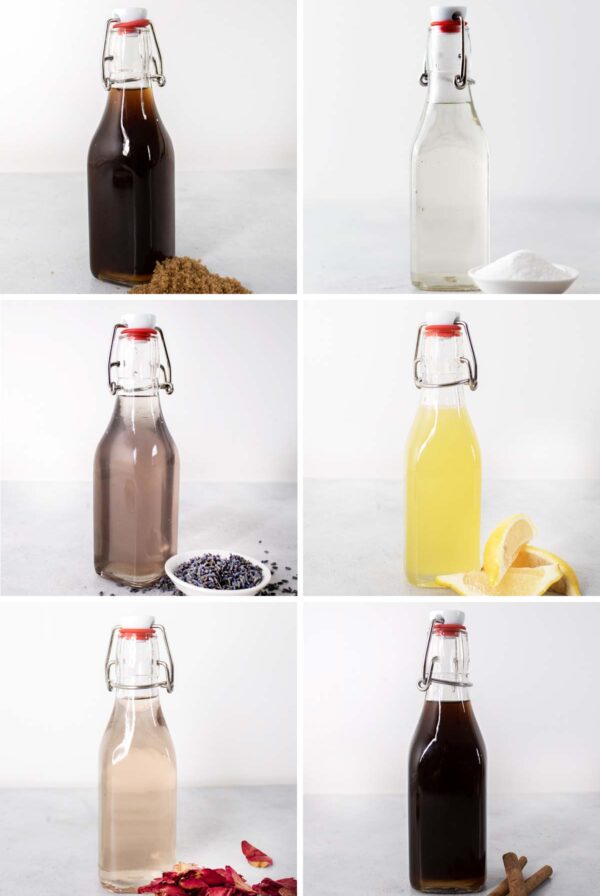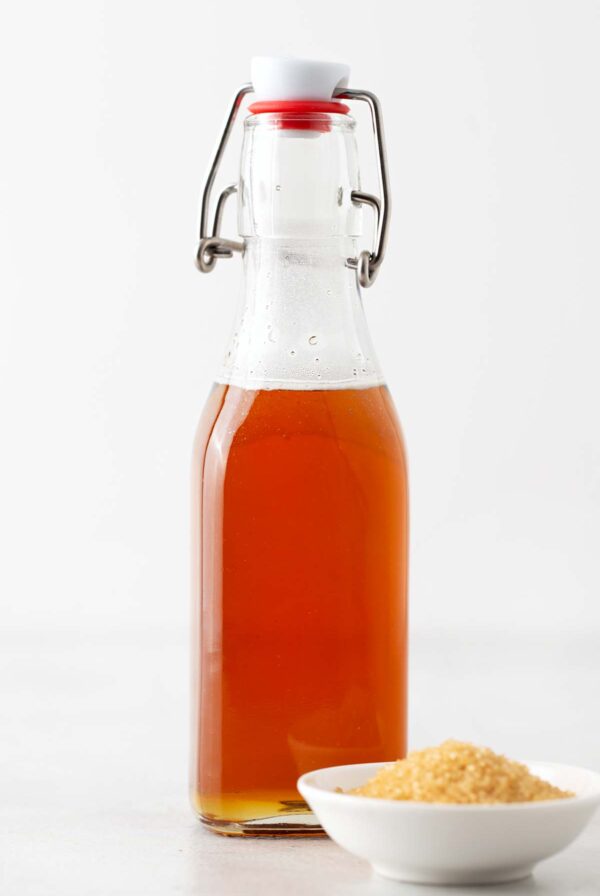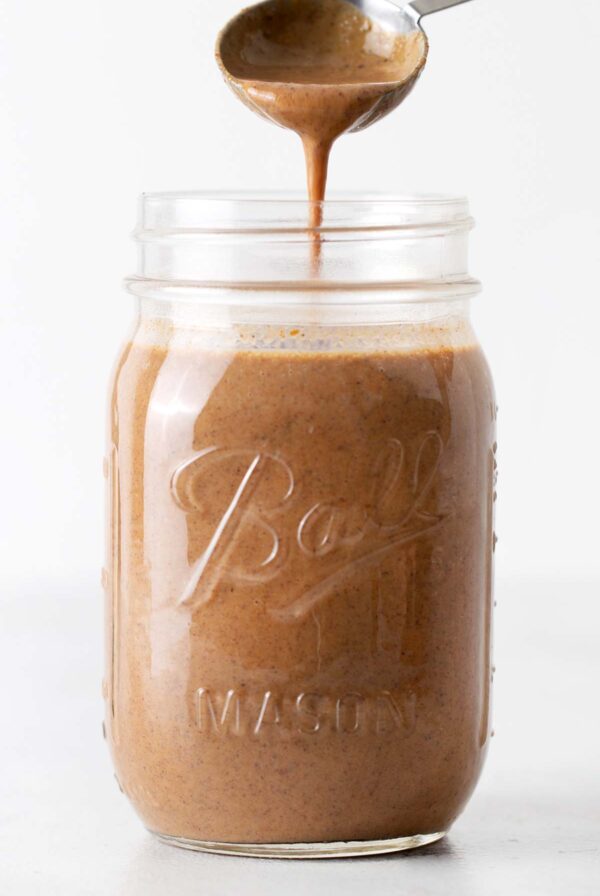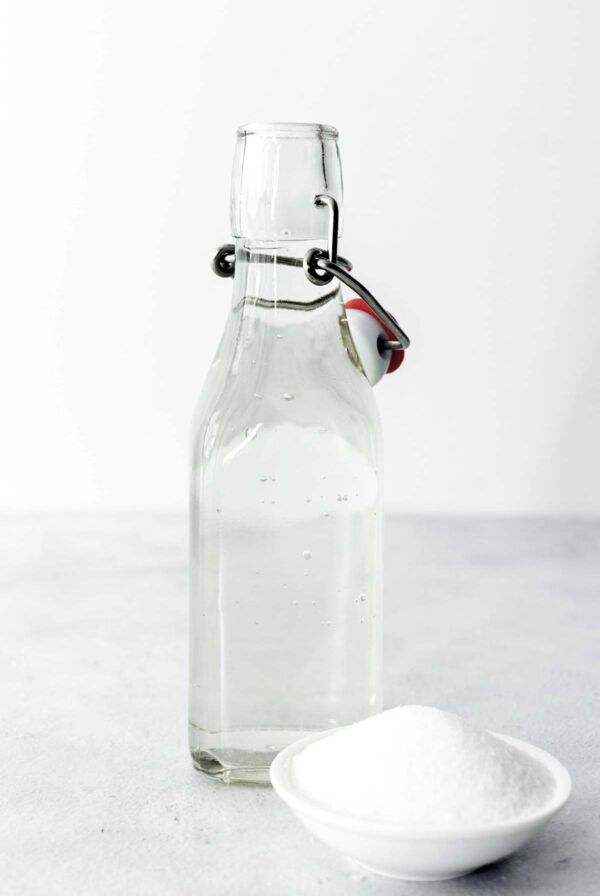Matcha Health Benefits and How to Make Properly
on Aug 22, 2022
This post may contain affiliate links. As an Amazon Associate, I earn from qualifying purchases.
Matcha is a finely ground green tea from Japan that’s packed with antioxidants. See matcha health benefits and detailed steps on how to make it properly from a certified Tea Sommelier.
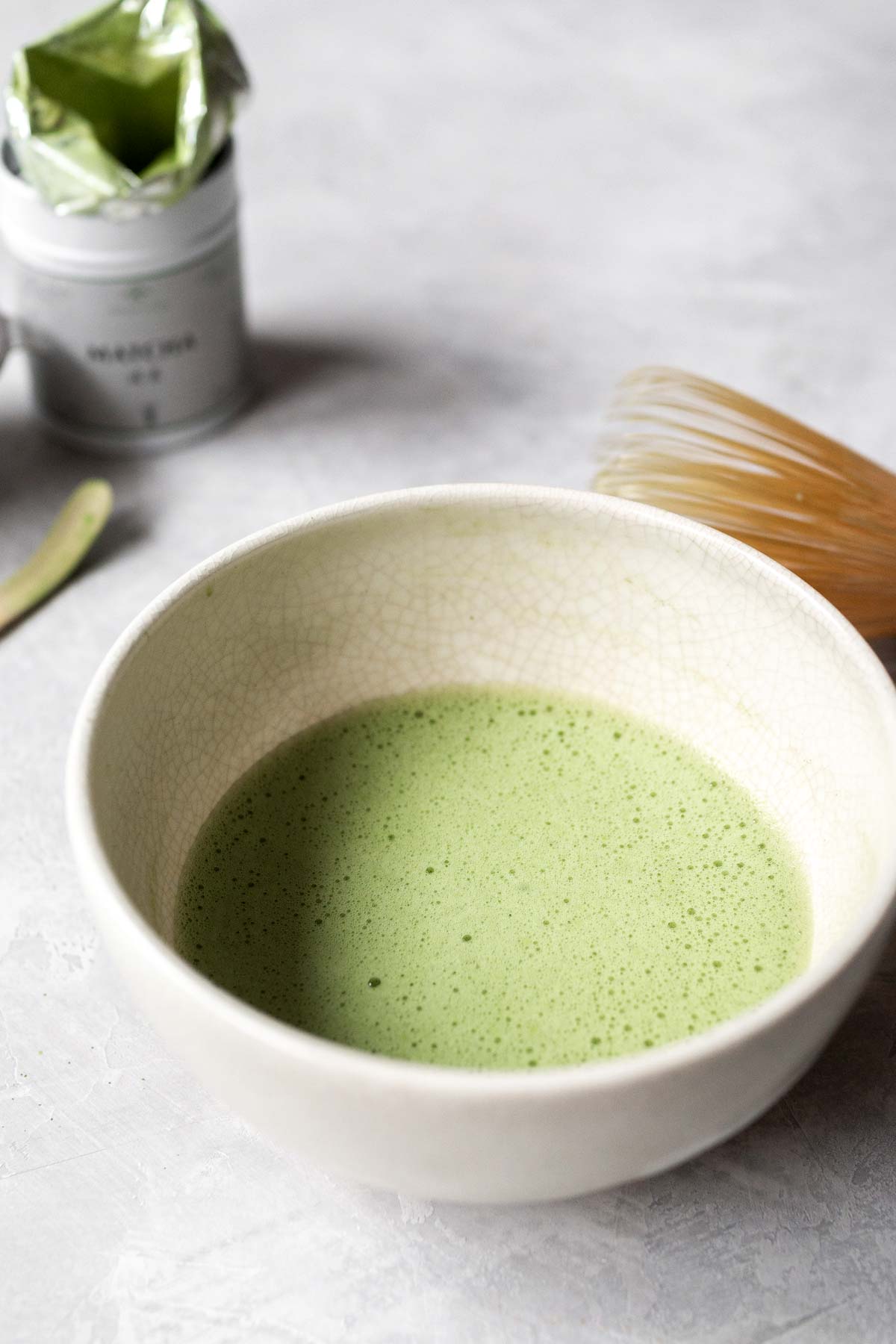
What is Matcha?
Matcha is a Japanese green tea that has been finely ground into a powder. In Japanese, “matsu” means rubbed and “cha” means tea so the translation is “rubbed, or ground tea.”
Traditionally, matcha is used in Japanese tea ceremonies where it is prepared hot, using a special bamboo whisk. It’s whisked in hot water and sipped from a matcha bowl. Matcha usually served with something sweet to balance out any bitterness from the tea.
Matcha costs more than other green teas since there’s a lot more steps (de-stemming, de-veining, shading the plant, and grinding the leaves) in creating the final product.
Tea farmers will cover the tea plants to prevent direct sunlight for about 20 days before harvest. This shading results in nutrient-heavy and vibrant green colored tea leaves.
Unlike tea where you would steep in water then remove the tea leaves, with matcha you’re drinking the actual leaves so it’s a lot more potent in terms of caffeine and nutrients.
Matcha is finely ground tea leaves so it’s whisked to suspend it in water because it’ll never dissolve.
Matcha is pronounced MAHT-CHA or MA-CHA.
RELATED: Delicious Matcha Drink Recipes
4 Matcha Health Benefits
1. Contains Antioxidants
According to a 2021 scientific article, matcha is packed with antioxidants like polyphenols and vitamin C.
This is important because antioxidants protect healthy cells from damage, which lowers the risk of chronic conditions like cancer and type 2 diabetes.
2. Provides Steady Energy
Compared to other green teas, matcha is particularly high in caffeine.
It also contains a molecule called L-theanine, which counteracts the stimulating effects of caffeine.
This provides a steady increase in energy without the caffeine crash.
3. Promotes Relaxation
The L-theanine in matcha can also relax the body and mind.
According to a 2022 scientific review, it works by acting on the nervous system. L-theanine is also known to enhance concentration and focus.
4. Maintains Heart Health
Another matcha tea benefit involves the heart. This is related to its antioxidants, which protect the heart by minimizing cellular damage and inflammation.
Drinking green tea in general also reduces high blood cholesterol, a major risk factor of heart disease.
Side Effect of Matcha
Although matcha contains less caffeine than coffee, it still has a high amount. So, if you’re sensitive to caffeine, use caution when drinking matcha.
According to the National Library of Medicine, possible symptoms of excess caffeine intake include jitters, restlessness, headaches, dizziness, fast heart rate, and trouble sleeping.
RELATED: Quick & Easy Iced Matcha Latte
Matcha at Starbucks
Starbucks in the United States uses a pre-sweetened matcha to make all their drinks. The first ingredient is sugar, followed by matcha.
Due to the sugar content, I wouldn’t consider it a healthy drink.
Matcha Tea Latte, Iced Matcha Tea Latte, Iced Matcha Lemonade, and Matcha Frappuccinos can all be found on the Starbucks menu.
A grande 16 oz matcha latte has 240 calories, 80 mg of caffeine, and 32 g of sugar. In comparison, a grande latte has 240 calories, 150 mg of caffeine and 18 g of sugar.
RELATED: Starbucks Iced Matcha Latte Copycat
Ingredient and Tool Notes
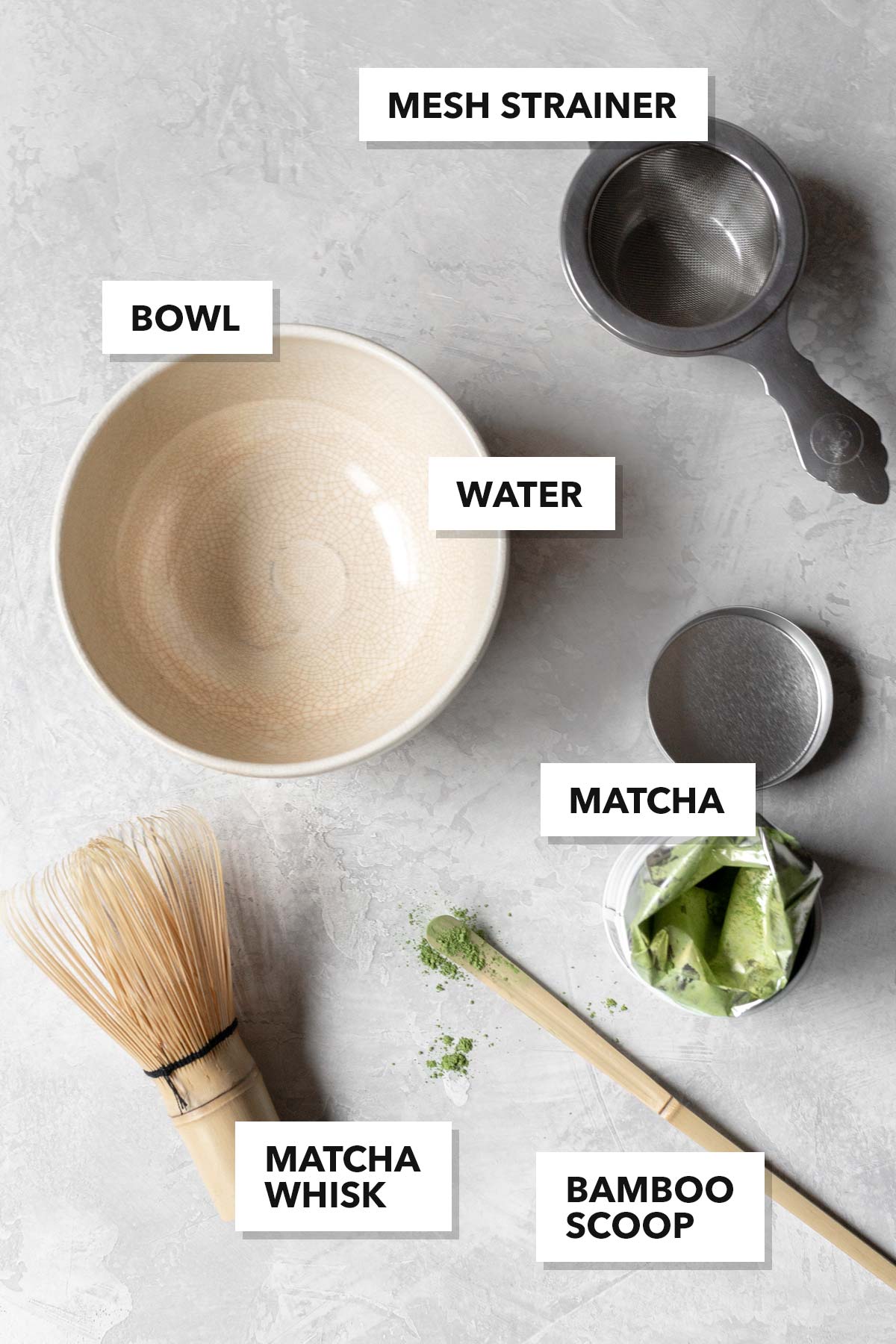
- Matcha: Use a bright green matcha in the $30-$50 range when preparing it with only water. Lower priced matcha can be used for making lattes.
- Water: I always recommend using filtered water when making any kind of tea. It’ll make your tea taste better than using tap water.
- Bowl: A matcha bowl should be flat bottomed with a wide opening so that there is plenty of room for the whisk to move around.
- Matcha whisk (chasen): A matcha whisk is made from one piece of bamboo. The most popular chasen is the 80-tip (the number of tips on the bamboo) but you’ll also find 100-tip and 120-tip. The more tips there are, the easier it is to whisk to get a better froth, but it’ll cost more.
- Bamboo scoop (chashaku): The scoop is for measuring matcha. It’s up to you how much matcha you want but I go with the recommended 2 grams, or one and a half heaping scoops or one teaspoon. Feel free to use a teaspoon if you don’t have a scoop.
- Mesh strainer: This is key to making a clump-free bowl of matcha.
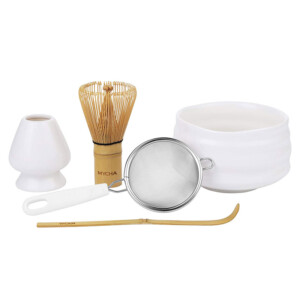
Photo Credit: amazon.com
Steps-by-Step Instructions
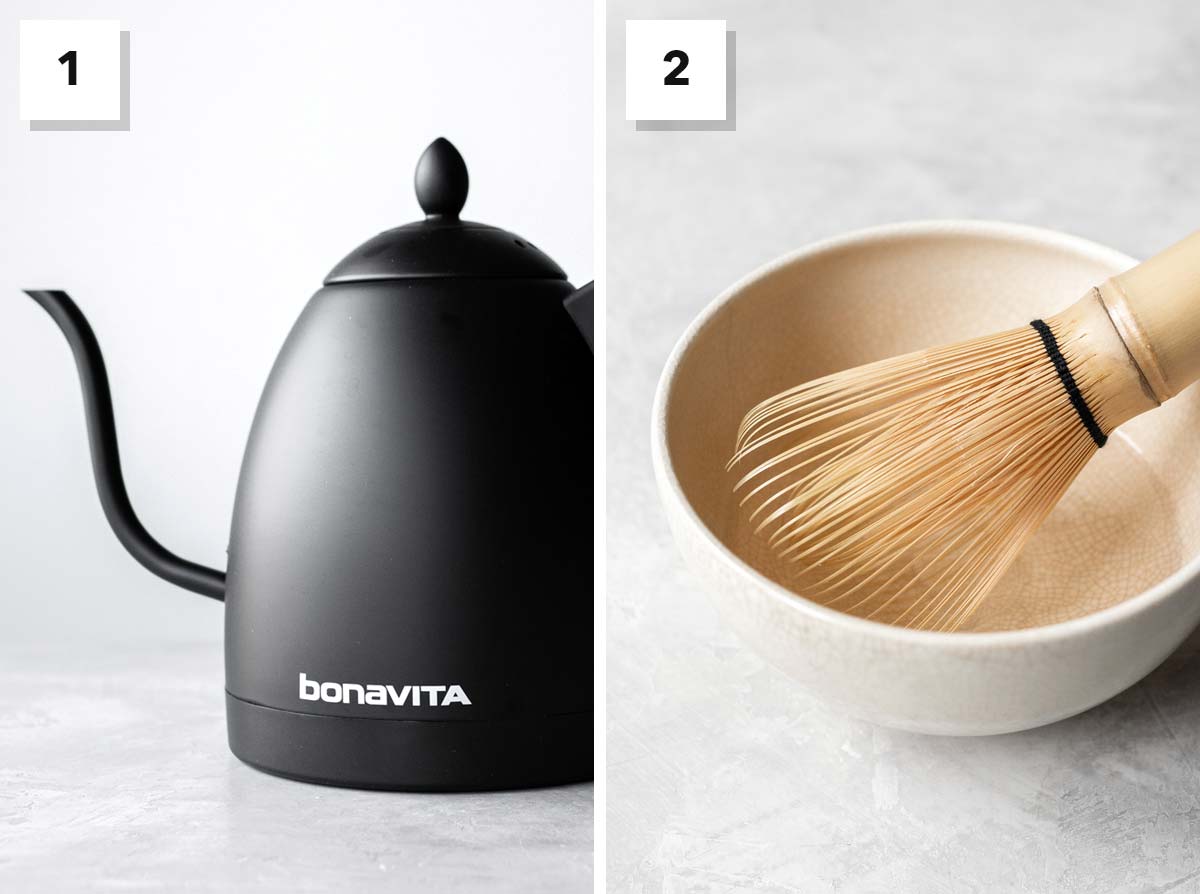
- Boil water.
Green tea is very tricky when it comes to water temperature. Use simmered water, not boiling hot. Use an electric kettle with a temperature setting to get the correct water temperature. Boil more than needed since you want extra to warm up the teapot. - Warm up bowl and rinse matcha whisk.
Pour hot water into the bowl and dip the matcha whisk to soak the tips of the whisk. Discard the water and dry the bowl.
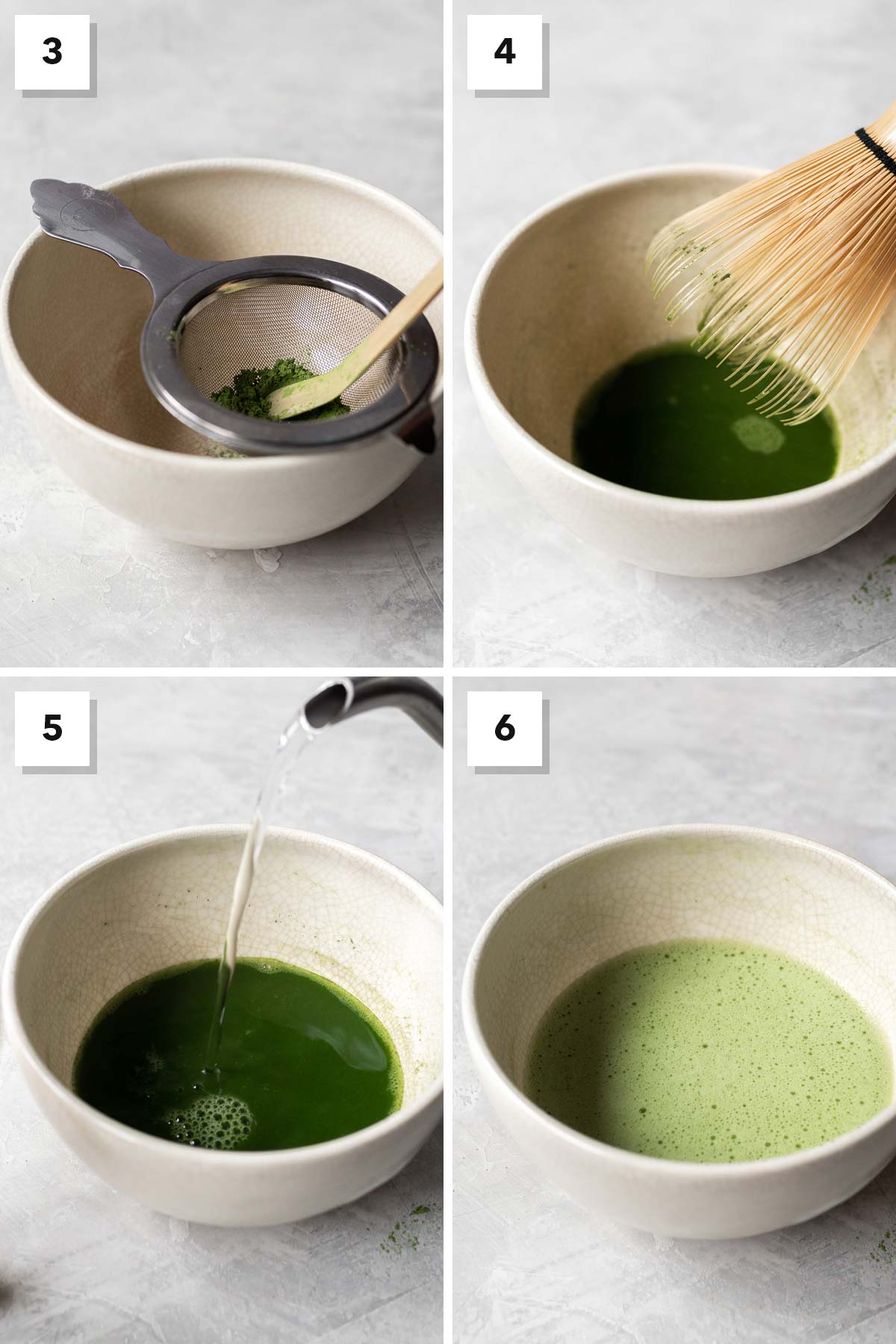
- Scoop and sift matcha into the warmed up bowl.
Use the scoop to sift the matcha into the bowl. - Pour a little hot water into the bowl and whisk.
This step is a make sure you don’t have clumps and it’s essentially making a matcha paste. - Add more hot water.
- Whisk vigorously.
The whisking movement should come from the wrist. Briskly move the whisk in a zig-zag or a “W” shape. You want to make around 10-15 W’s. The best made matcha are ones that don’t have any big bubbles.
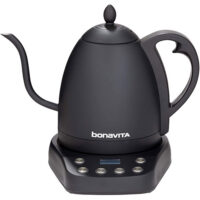
My Electric Kettle Pick
Tea Sommelier’s Tips
Matcha color tells you the quality.
Matcha quality is easy to tell by just looking at the color. The more vibrant green the matcha, the better the quality, and more expensive. For recipes or matcha lattes, look to spend $20-$30 and for making matcha only with water, get higher quality matcha in the $30-$50 range.
Matcha grades are just for marketing purposes.
Ceremonial and cooking grade matcha are labeled for marketing purposes only. These labels don’t exist in Japan. The more expensive matcha is usually ceremonial grade and that’s the one you want when drinking it straight with just hot water.
Practice, practice, practice.
The secret to making a proper bowl of matcha is practice. When you whisk for the first time, the bubbles you create in the matcha froth will be on the bigger side, but the more you practice, the bubbles will get smaller. The size of the bubbles indicate right away how good someone is at making matcha.
Use good quality water.
Make matcha using good quality water for a better, cleaner taste. I recommend using filtered water for making any kind of tea.
Sip matcha from the bowl.
Matcha is meant to be sipped directly from the bowl using both hands. Place your left hand under the bowl and your right hand rounding the side of the bowl. Traditional matcha in a bowl is meant to be finished in three sips.
Don’t buy the most expensive whisk as a beginner.
The whisks from Japan are made from bamboo that are treated with care so that the tines are super flexible yet strong. The flexibility makes it easier to create the froth. When starting out, get inexpensive matcha whisks made in China or Korea since you may destroy it quickly from improper whisking like scraping the whisk against the bottom of the bowl.
Soak the matcha whisk.
When you first use your whisk, make sure to soak it in warm water for about 5 minutes to soften the tips. Try not to get the handle of the whisk wet, only the bottom below the dark thread.
Clean and store the matcha whisk properly.
Don’t store your whisk in the plastic container it came in. You need to let it air dry so either leave it upright or get a matcha whisk holder.
To clean the matcha whisk properly, either whisk it in clean hot water or run it under the faucet, being careful not to get the handle wet. After the rinse, take your thumb, index and middle finger and gather the center tines on the inside and give it a small twist to separate the outer and inner tines.
Don’t wet the bamboo scoop.
Never get the bamboo scoop wet. It can warp the scoop so that it flattens out the end. Instead of cleaning it with soap and water, all you need to do is wipe off any matcha residue using a dry paper towel or cloth.
Store matcha properly.
Store matcha at room temperature or in the refrigerator. (Bring the matcha to room temperature before using.) Either way, make sure it is kept in an opaque, airtight container away from moisture, heat, and light. This will retain the color and quality as long as possible. It is recommended that after you open the package, matcha should be consumed within 6 months.
RELATED: Matcha Latte
Questions You May Have
Real matcha is only grown in Japan and it’s reflected in the price. If you see really cheap matcha (under $15), it’s probably from China, where shortcuts in the processing are made and it lack will the subtle refined taste and the vibrant green color as it’ll be a very dull green (more brown in color).
Yes, matcha is green tea, so there’s caffeine in matcha.
Matcha tastes vegetal, slightly bitter, and full-bodied. It’s complex and some even have a slightly sweet finish.
There are two traditional ways of preparing matcha — thin (Usucha) and thick (Koicha). Thin matcha is an everyday drink and whisked until you get a froth. Thick matcha is used for ceremonies and special occasions and it’s prepared without any froth.
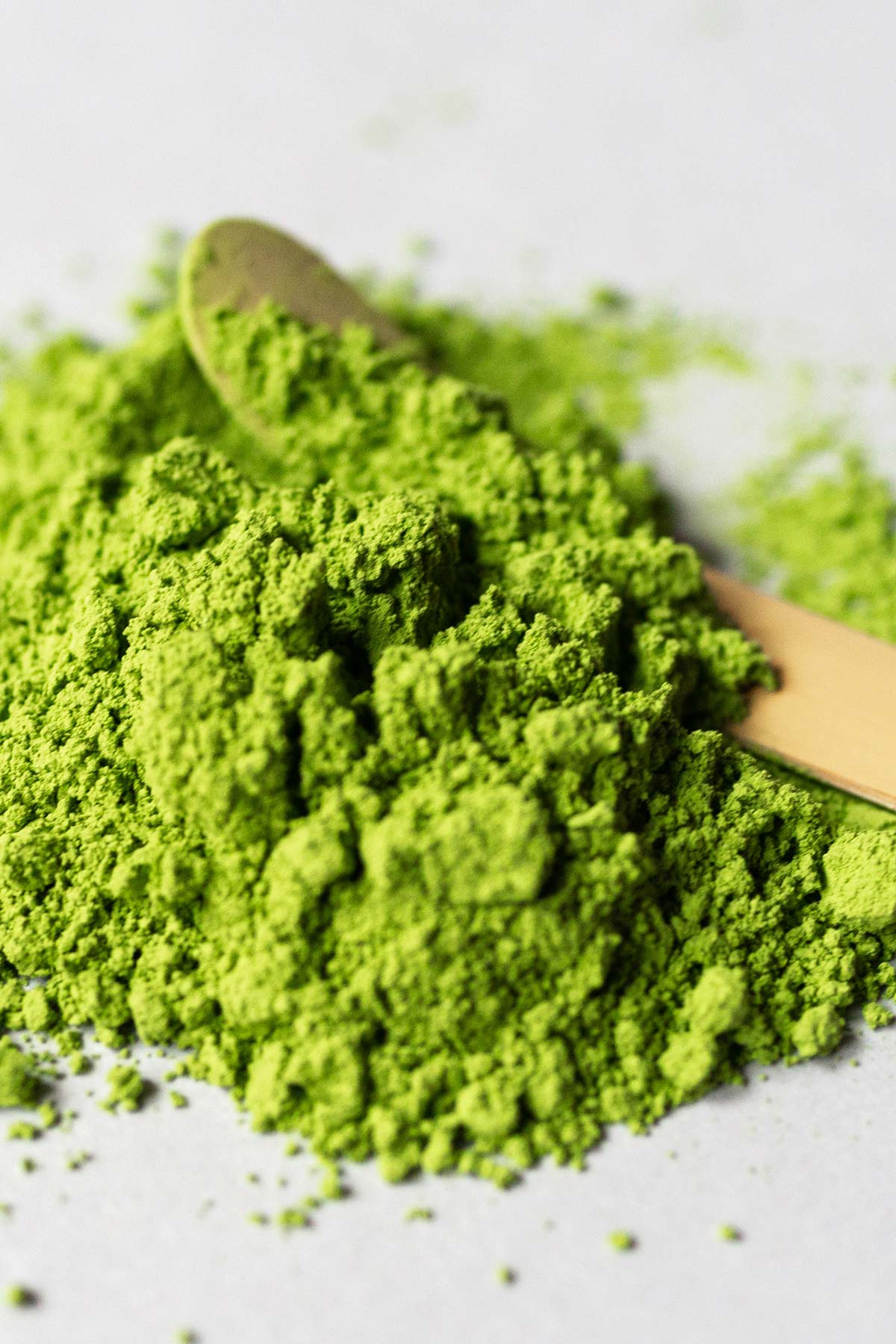
Related
- Starbucks Matcha Frappuccino Copycat
- Matcha Bubble Tea
- Starbucks Matcha
- Matcha Ice Cubes
- Iced Matcha (Cold Brew Matcha)
Want to save this recipe to Pinterest for later? Pin it now to your Pinterest board!
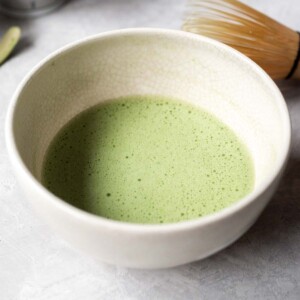
How to Make Matcha
Ingredients
- 1 teaspoon matcha, or 2 matcha scoops
- ¼ cup water, + more to warm bowl
Instructions
- Boil water.Green tea is very tricky when it comes to water temperature. Use simmered water, not boiling hot. Use an electric kettle with a temperature setting to get the correct water temperature. Boil more than needed since you want extra to warm up the teapot.
- Warm up bowl and rinse matcha whisk.Pour hot water into the bowl halfway and swirl the hot water around. Dip the whisk and move it around to soak the tips to soften them. Pour out the water and dry the bowl using a clean cloth or paper towel.
- Scoop and sift matcha into the warmed up bowl.Place a mesh strainer over the dry matcha bowl and using the matcha scoop, put matcha into the strainer. Sift matcha, using the scoop to help sift.
- Pour 2 tablespoons of hot water into the bowl and whisk.This step is a make sure you don't have clumps and it's essentially making a matcha paste. Move the whisk around slowly in half circles until all clumps are gone.
- Add 2 more tablespoons of hot water. Whisk vigorously.Hold the handle of the whisk using your thumb and index finger, holding the whisk upright. Use the rest of the fingers to rest to support the whisk. The whisking movement should come from the wrist. Briskly move the whisk in a zig-zag or a “W” shape. You want to make around 10-15 W’s. You can also push any bubbles to the side of the bowl to pop.
- Drink from the bowl.Matcha is meant to be sipped using both hands. Place your left hand under the bowl and your right hand rounding the side of the bowl. Traditional matcha in a bowl is meant to be finished in three sips.
Notes
- Matcha quality is easy to tell by just looking at the color. The more vibrant green the matcha, the better the quality, and more expensive. For recipes or matcha lattes, look to spend $20-$30 and for making matcha only with water, get higher quality matcha in the $30-$50 range.
- Ceremonial and cooking grade matcha are labeled for marketing purposes only. These labels don’t exist in Japan. The more expensive matcha is usually ceremonial grade and that’s the one you want when drinking it straight with just hot water.
- The secret to making a proper bowl of matcha is practice. When you whisk for the first time, the bubbles you create in the matcha froth will be on the bigger side, but the more you practice, the bubbles will get smaller. The size of the bubbles indicate right away how good someone is at making matcha.
- Make matcha using good quality water for a better, cleaner taste. I recommend using filtered water for making any kind of tea.
- Matcha is meant to be sipped directly from the bowl using both hands. Place your left hand under the bowl and your right hand rounding the side of the bowl. Traditional matcha in a bowl is meant to be finished in three sips.
- The whisks from Japan are made from bamboo that are treated with care so that the tines are super flexible yet strong. The flexibility makes it easier to create the froth. When starting out, get inexpensive matcha whisks made in China or Korea since you may destroy it quickly from improper whisking like scraping the whisk against the bottom of the bowl.
- When you first use your whisk, make sure to soak it in warm water for about 5 minutes to soften the tips. Try not to get the handle of the whisk wet, only the bottom below the dark thread.
- Don’t store your whisk in the plastic container it came in. You need to let it air dry so either leave it upright or get a matcha whisk holder.
- To clean the matcha whisk properly, either whisk it in clean hot water or run it under the faucet, being careful not to get the handle wet. After the rinse, take your thumb, index and middle finger and gather the center tines on the inside and give it a small twist to separate the outer and inner tines.
- Never get the bamboo scoop wet. It can warp the scoop so that it flattens out the end. Instead of cleaning it with soap and water, all you need to do is wipe off any matcha residue using a dry paper towel or cloth.
- Store matcha at room temperature or in the refrigerator. (Bring the matcha to room temperature before using.) Either way, make sure it is kept in an opaque, airtight container away from moisture, heat, and light. This will retain the color and quality as long as possible. It is recommended that after you open the package, matcha should be consumed within 6 months.
Nutrition
Nutrition information is automatically calculated, so should only be used as an approximation.
